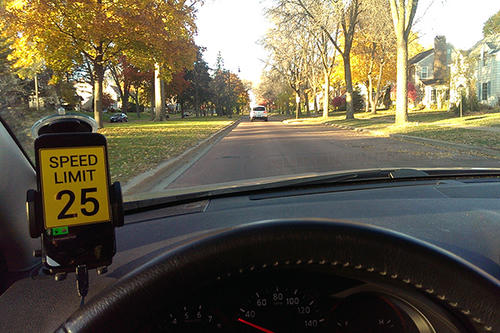
Although teen drivers make up a small percentage of the U.S. driving population, they are at an especially high risk of being involved in a crash.
To help keep teen drivers safe on the road, researchers at the U of M’s HumanFIRST Laboratory have been refining the Teen Driver Support System (TDSS).
The smartphone-based TDSS device, mounted on the vehicle's dashboard, provides visual and auditory warnings to the teen driver about speeding, stop sign violations, excessive maneuvers, upcoming curves, unauthorized passengers, and seat belt use. It also prevents teens from using their phones to text or call (except 911) while driving. If an infraction continues after the TDSS warning, a text message is sent to parents. Information is also available to parents on a website that summarizes their teen's driving events and behaviors over time.
A usability study of the system completed in 2011 found that teens and parents held favorable opinions about most of the TDSS functions. They also believed that using the system after obtaining a license may result in teens adopting safer driving habits that remain even after the system is no longer in use.
The University is exploring options for commercialization of the TDSS.
- Categories:
- Science and Technology





